One-sentence summary
Between extreme warmth, tornadoes in odd places, raging fires in Texas, and a blizzard in California, there is no shortage of wild, rare weather to close February.
Tornadoes in Michigan in February?
In and of themselves, tornadoes in Michigan are not uncommon. Tornadoes in winter are rare. Only six previously documented tornadoes have occurred in Michigan in December, January, or February since 1950. Add another two to that after last night.
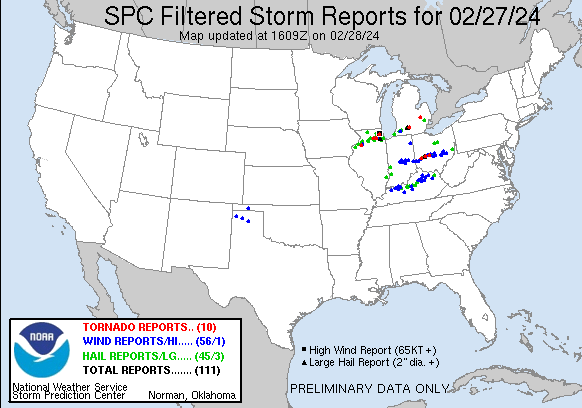
According to the Storm Prediction Center, two tornadoes were reported yesterday, one near Marshall and another near Grand Blanc, MI. The other winter tornadoes included one in January 1996 near Richland, MI (just outside Battle Creek and Kalamazoo), one west of Detroit in December 2015, and then four on the last day of February in 2017 near the Indiana border.
So, winter tornadoes are rare to begin with, yet having one as far northeast as Grand Blanc, which is near Flint seems completely out of place in the wintertime. This comes on the heels of Wisconsin recording their first February tornado on record earlier this month. January tornadoes have occurred in Wisconsin, with Janesville on the receiving end of an especially bad one in 1967.

Tornado statistics are tough to do a whole lot with authoritatively. Some tornadoes are very brief and never reported. Reports have increased dramatically since records started being kept, so it’s entirely possible we’re missing some reports from back in the day. But however you want to slice it, tornadoes this far north during this time of year are straight up rare. And to have more than one distinct event in a very far north part of the country this close in proximity to one another further underscores how unusual this is.
Record warmth over a tremendous swath of real estate
On the day of the Janesville tornado noted above, they hit 60 degrees before dropping to about 25 the next morning. Interestingly, if you look at Cold Spring, WI just northeast of Janesville, they pulled off one heck of a change yesterday to today. Temperatures were over 71 degrees yesterday and dropped to below 13 degrees this morning.
Dozens and dozens of records were smashed this week, including multiple monthly temperature records. Monthly records fell in Quebec, Ontario, Missouri, Illinois, Wisconsin, Michigan, Minnesota, and Arkansas, according to Maximiliano Herrera, who keeps an exhaustive record of these things.
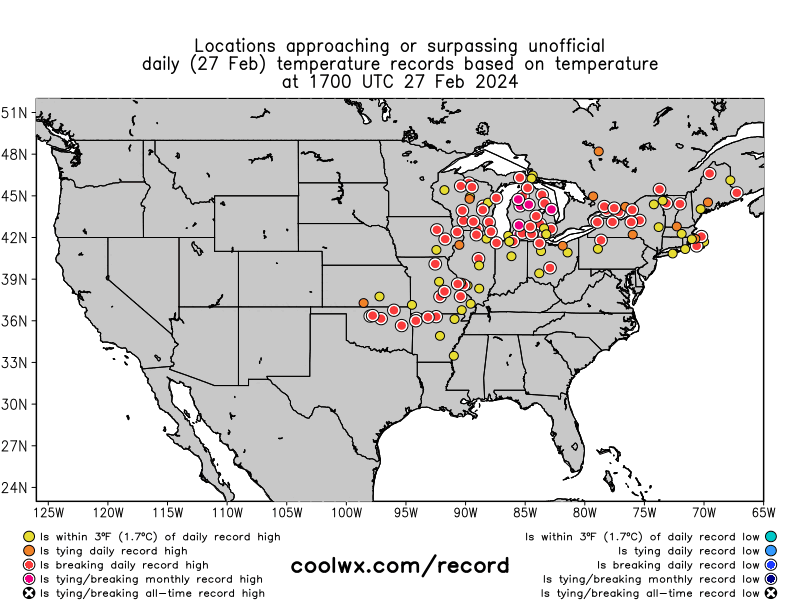
Not only are some of these monthly records being replaced, they’re being replaced by several degrees and being attained in multiple, disparate spots in these states. Even Mexico has seen incredible extent of record warmth. The breadth of the warm weather we’ve seen at times in the last few years boggles the minds of many meteorologists, including those like ourselves that tend to view things from a grounded, level-headed perspective.
Texas Panhandle burning
Over the last few days, a number of fires have broken out in parts of the Texas Panhandle. Fire behavior went off the rails yesterday, as strong winds ahead of a cold front and strong winds and dry air behind the cold front allowed for extreme growth and spread.
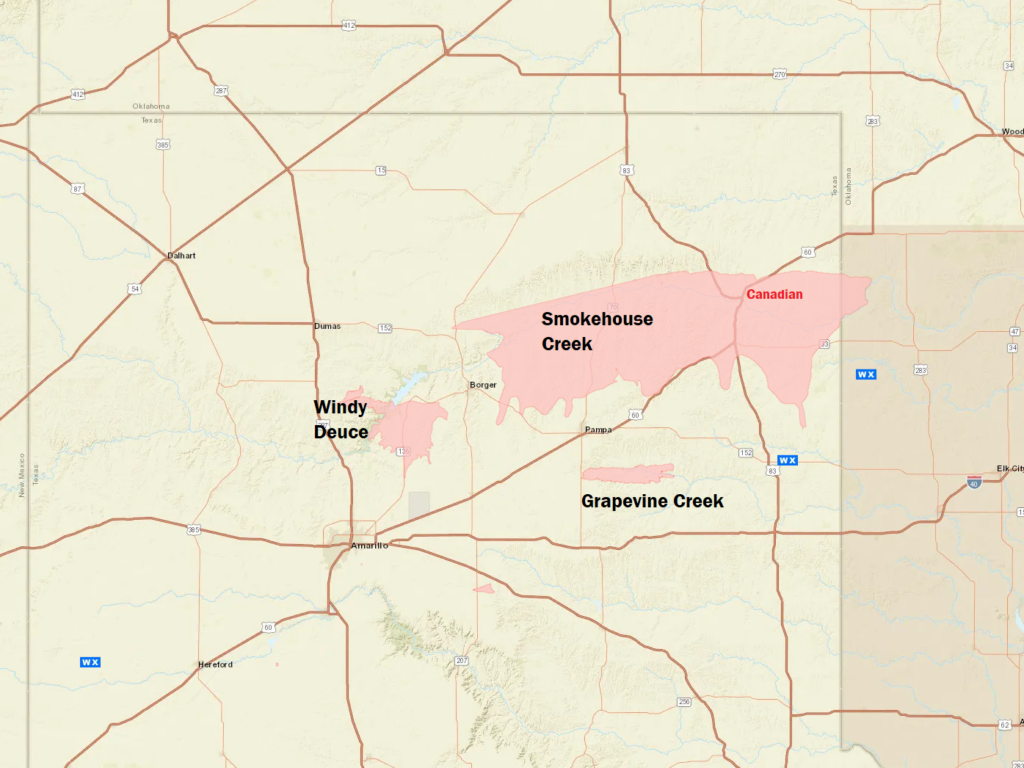
We’ve seen bad fires in Texas before, especially in the Panhandle. This in and of itself is not necessarily uncommon. March and April tend to be the big Texas fire months historically, so this is certainly at least a bit early. Texas’s largest wildfire (going back to the 1980s) was the East Amarillo Complex, which occurred in March of 2006. The Smokehouse Creek complex is now the second largest on record in Texas, thanks in part to how quickly it grew yesterday. What is intriguing to me is how this happened despite that part of Texas being mostly out of drought. Compare the Drought Monitor maps below showing current conditions to the conditions preceding the 2006 East Amarillo complex. There are notable differences here.
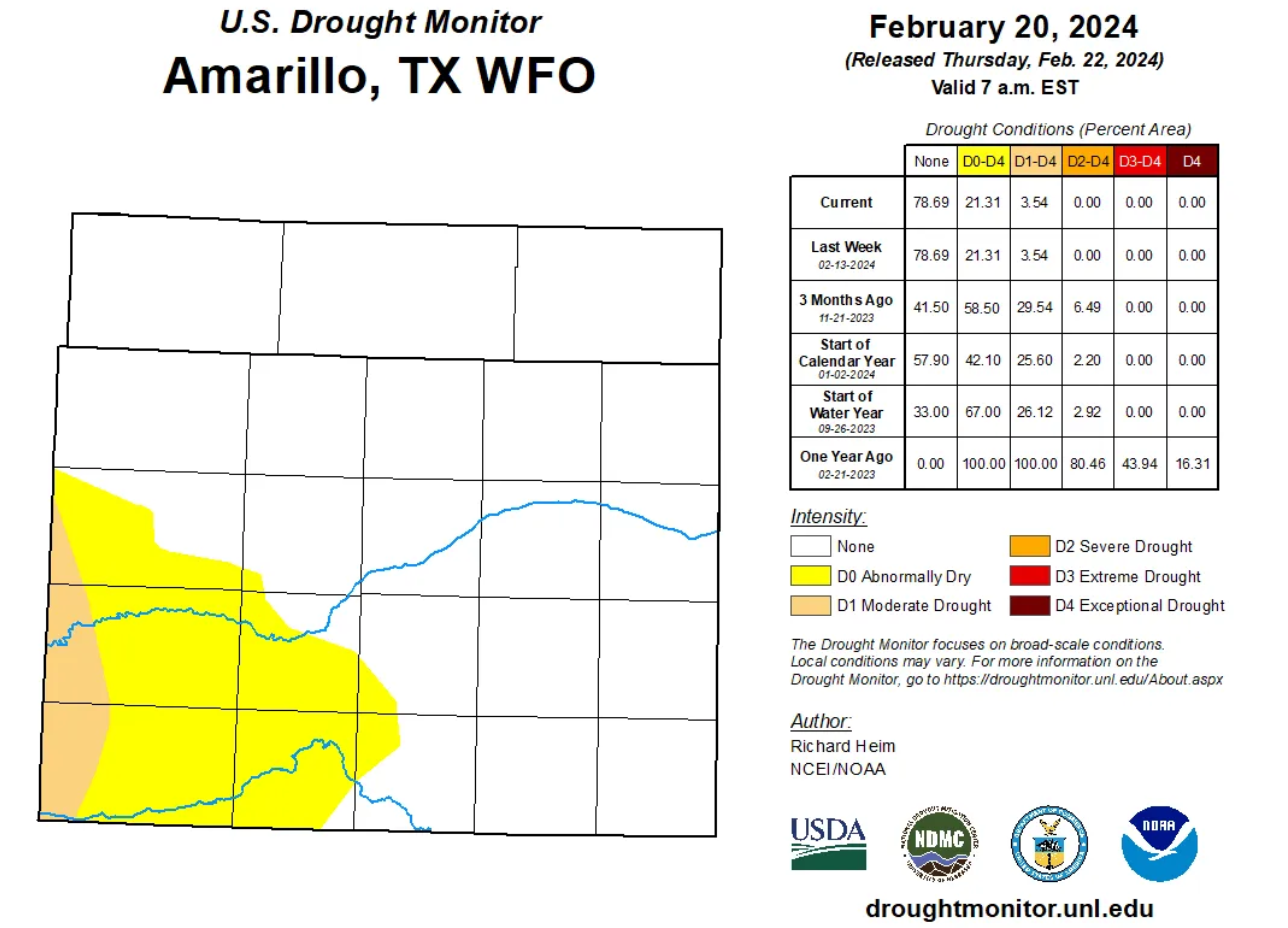

Whatever the case, the burn scar is clearly visible this morning on satellite imagery, a depressing coda to a pretty terrible situation for the Panhandle.
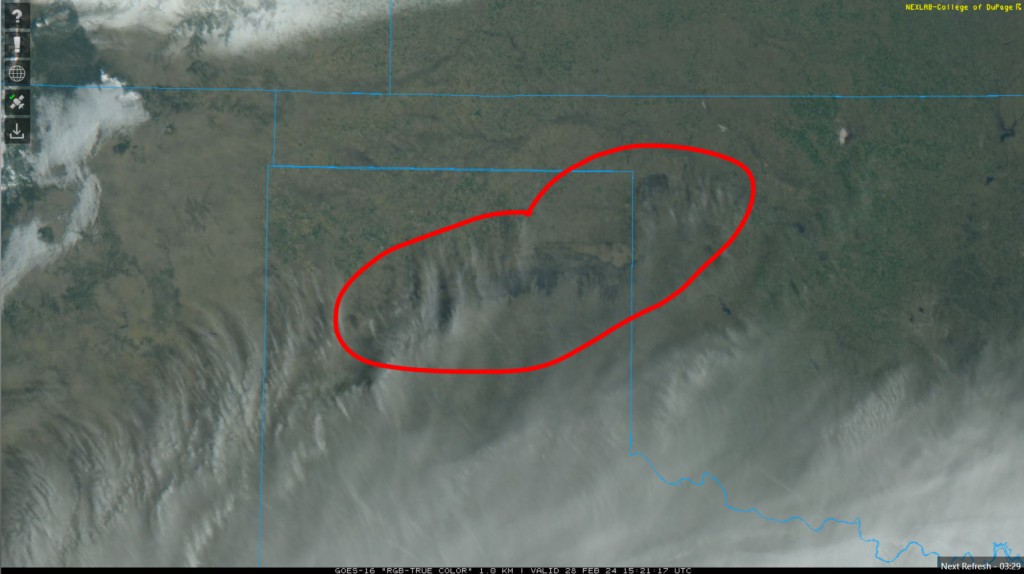
California blizzard warnings for the Sierra
When we think of the Sierra Nevada in California, snow certainly comes to mind. But not often do Blizzard Warnings get issued in that part of the world. The storm that will impact them over the coming days has prompted some pretty severe warnings about travel and conditions within the mountains. Upwards of 5 to 10 feet of snow could fall, likely shifting the Sierra from deficit to surplus on the season in terms of snowpack.
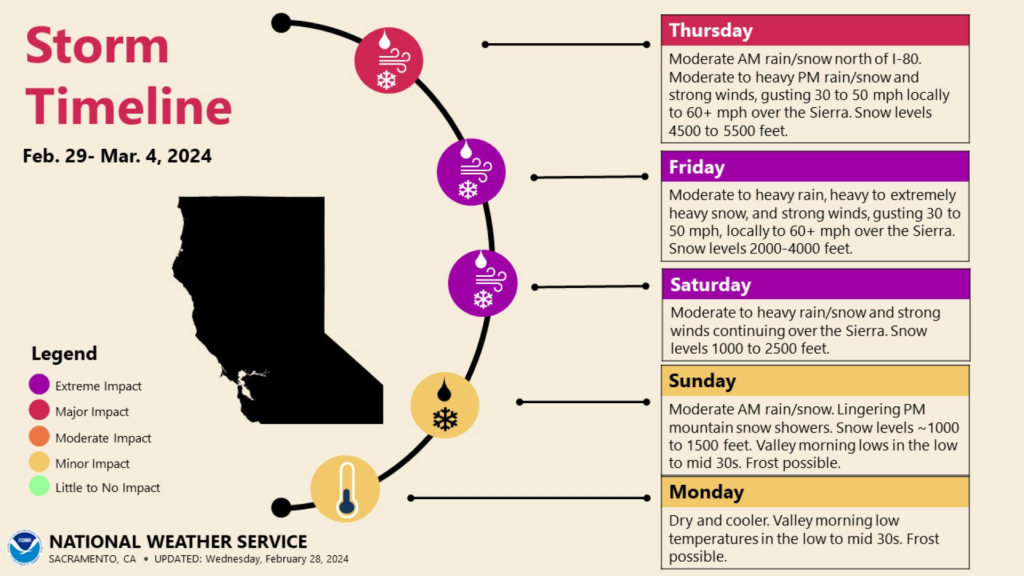
The last such blizzard type event literally occurred a year ago. This storm looks even more powerful.
Additional rain will occur for parts of California as well, including a chance of thunderstorms for places including San Francisco.
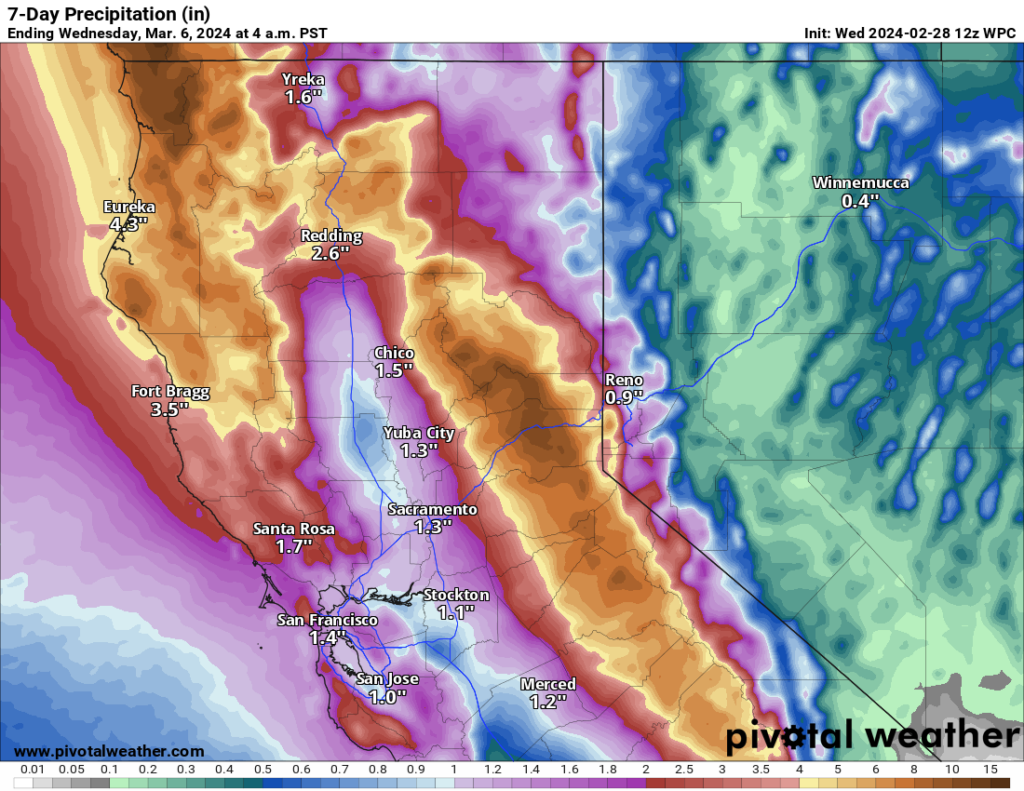
The bottom line is that the weather is pretty wild right now. While some of it is typical for a spring-type setup, a lot of abnormal, unusual, and rare things are occurring simultaneously, a theme we’ve grappled with on more than one occasion recently.
It sounds like the beginning of Spring to me!
Hey! They should make a movie about this wild weather!😂
Thanks for mentioning Janesville! I grew up there!
My family lives in Borger and that is where they evacuated the people from Fritch. The fires were so close and the only reason Borger was spared was because a front moved through and changed the direction of the wind. Prayers for all those in the panhandle.
Sounds to me like people need to read Revelation. It sure sounds familiar to me.
My heart goes out to all the people affected by the wild weather whether it is the fire in Texas (my state) or the tornados, snow and rain other states are experiencing. I live on the coast and the cold weather we have experienced this year is one of the worst I remember. Prayers for all affected.
Hey California, looks like your prayers are being answered. Take advantage of that and place more resources on it!! (storing water).